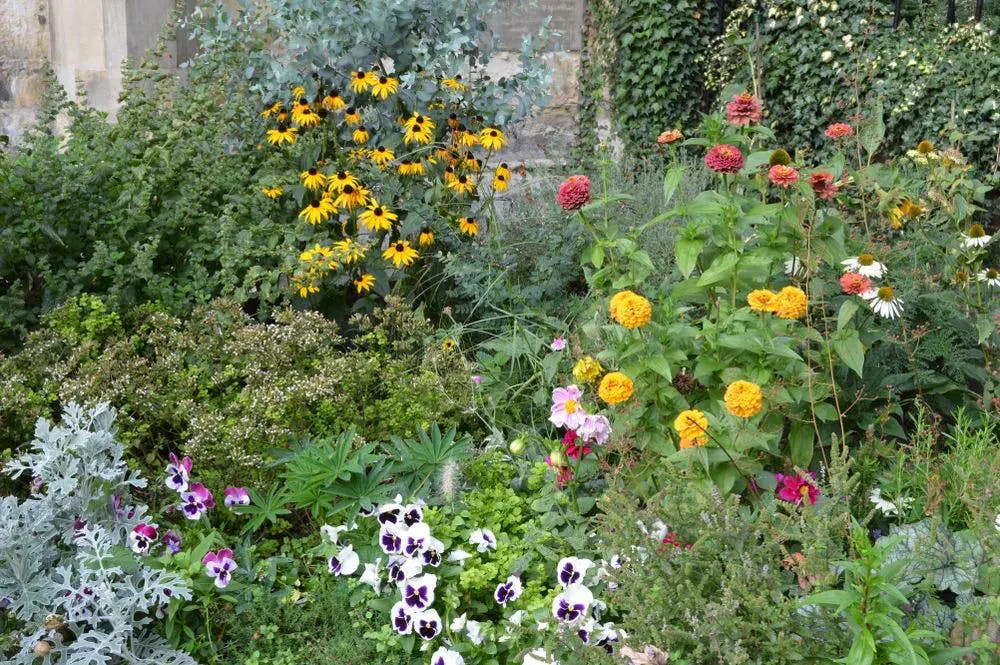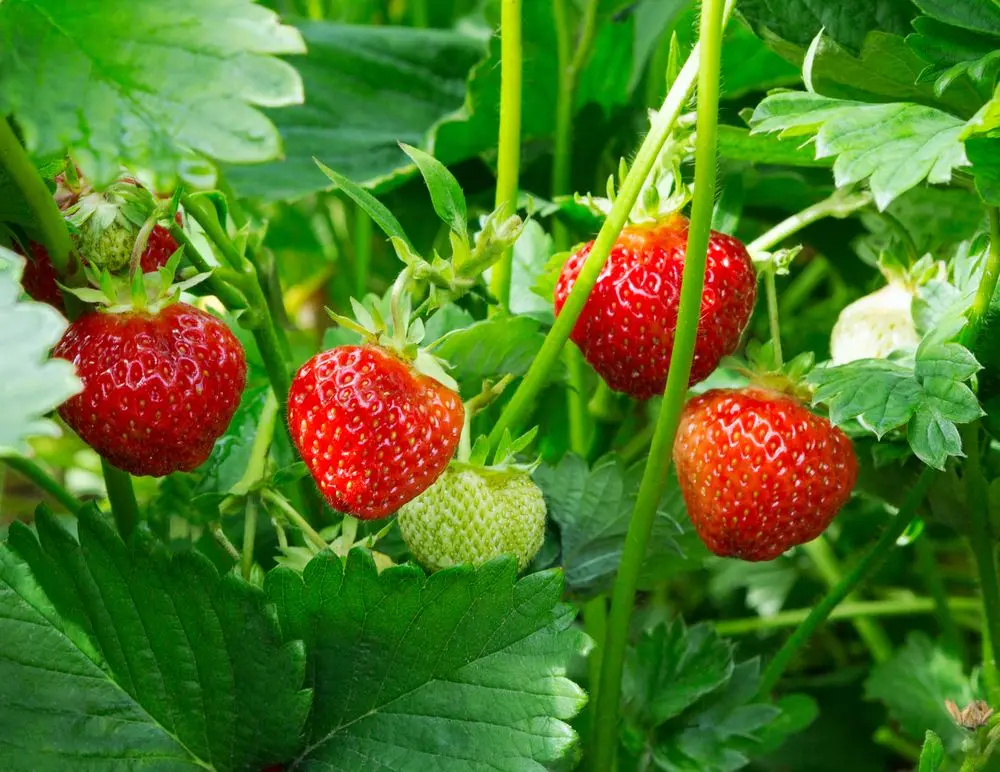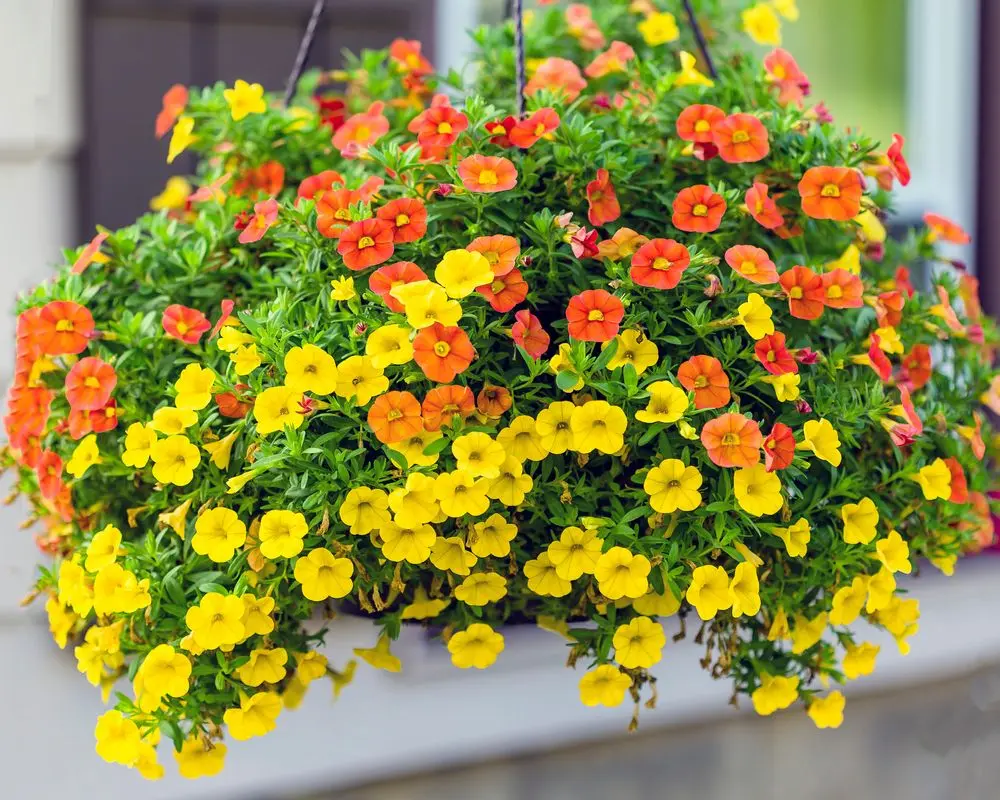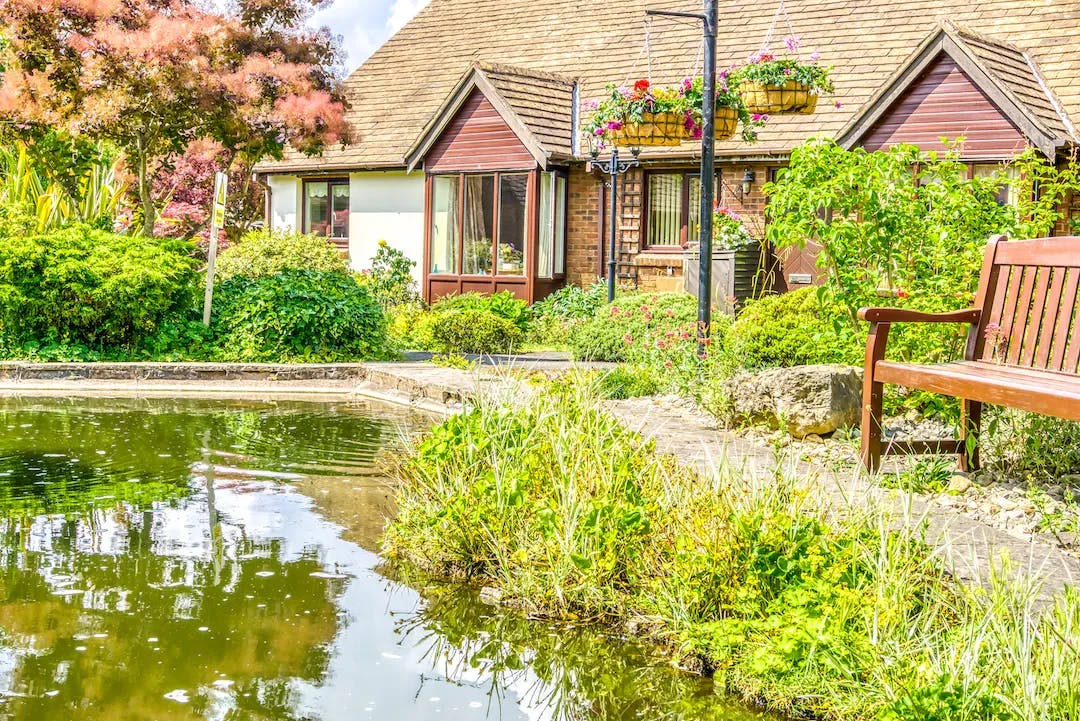How to Create a Sensory Garden For Someone With Dementia

Estimated Reading Time: 9 minutes
Sensory gardens are a unique garden type which aim to stimulate the senses through vibrant colours, distinctive smells and relaxing sounds.
Sensory gardens are a great dementia support tool, as they’re calming and healing. They’re often found in dementia care homes.
Here, we’ve looked at different ways to create a sensory garden to stimulate the five senses, along with the benefits and the care homes we offer with sensory gardens for dementia.
Need to find dementia care fast?
Browse the best dementia care homes for your loved one.
In this article on sensory gardens:
- What is a sensory garden?
- The benefits of sensory gardens
- Creating a sensory garden for the five senses
- Garden layout
- The best plants for a sensory garden
- How to create a small sensory garden
- Our care homes with sensory gardens for dementia
What Is A Sensory Garden?
As the name suggests, a sensory garden stimulates the five senses - sight, sound, taste, touch and smell - through numerous aspects and elements, including individual plants, other features and the overall design.
These enriching spaces can work wonders for mental and emotional wellbeing.
They play an important role in reminiscence therapy for dementia, as for some, they can help recall special memories.
Sensory gardens can benefit people with other mental health conditions such as depression and anxiety.
They can also provide safe and controlled spaces for children with autism to explore.

The Benefits Of Sensory Gardens
Here are some of the benefits associated with sensory gardens, particularly for people with dementia:
- Experiencing things in a multi-sensory way helps people remember old memories and create new ones, just like through reminiscence therapy
- They promote independence in care, such as within a care home
- A clearer mind
- Improved mood and emotional wellbeing
- Reduced feelings of stress
- Better physical health
Creating A Sensory Garden For The Five Senses
There are lots of different ways to create a sensory garden.
You’ll want to think about the different plants and flowers that’ll work best in your garden, along with any other equipment and decorations such as benches, water features, wind chimes and bird feeders.
Below, we’ve gone through how you can create an amazing garden to stimulate each of the five senses - and what to put in it.
Sight
Arguably the most important sense for many within a sensory garden is sight.
Your main decisions here will depend on what kind of vibe you want to create in your garden. For example, cool colours - such as blues and greens - will create a more calming effect, whereas brighter colours - such as reds and pinks - will make a space feel more vibrant.
You can create an amazing visual impact by adding colour throughout your garden. Purple coneflowers, tulips and pelargoniums are bright and bold.
Be sure to use varied plants to create a more visually interesting garden. Choose plants that creep, trail, climb and stand upright.
If space is limited, you can instead utilise a balcony or small terraced area to grow your plants in containers. In this case, you might want to use plants which grow upwards, as this will create a more impressive sight.
You can also create visual impact in a garden through things aside from plants:
- Water features
- Fairy lights (solar-powered lights often work well)
- Ornaments
- Birds feeders (these will encourage wildlife, adding extra energy to your garden)
Make sure to put out some comfy seating so you have somewhere to admire all of these sights.

We’re here to help you find the right dementia care home for you or your loved one. You can request a free list of dementia care homes from our care experts, who will then share homes matching your budget and location. You can also search for a dementia care home through our easy-to-use directory.
Sound
Sound is also really important in a sensory garden. It helps people with dementia or similar conditions feel at one with nature. When done right, sound can also be relaxing.
You’ll want to think about what noises will be heard in your garden, such as the rustling of leaves, the gentle clanging of a wind chime or the trickle of a water feature.
Inviting wildlife into your garden will create all sorts of sounds. Pollinator-friendly plants such as wildflowers will bring numerous insects with them, while bird feeders will draw in lots of different types of birds.
A gravel path will provide a pleasing crunching sound as you walk, while ornamental grasses such as pampas grasses can provide a much softer and gentler sound.
One of the most relaxing sounds in nature is running water. A pond or a different kind of water feature will provide the noise of water gently flowing or trickling. This pond will likely become your or your loved one’s favoured spot for quietly taking in the surroundings.

Bringing all of these elements together - including trickling water, birds chirping, bees buzzing, wind rustling and leaves crunching - will create a wonderful medley of sound which is certain to stimulate the senses.
Taste
Often forgotten within a sensory garden, your taste buds still have a big part to play.
No matter the size, you can grow a variety of delicious herbs, fruits and vegetables within your green space.
Herbs such as rosemary, basil and mint are easy to grow and delicious to cook with (while also providing a lovely scent). You can grow fruits such as strawberries and gooseberries to munch on while you journey around the garden. Beetroot, radishes and bush tomatoes are some of the easiest vegetables to grow and can be used to create a variety of amazing lunches and dinners.

You could also grow chilli peppers to give an added kick at cooking time!
If you’re lacking in space, you can instead grow herbs, vegetables and certain fruits on a windowsill (or any other space which gets plenty of sunlight).
Touch
The best way to stimulate touch in a sensory garden is by making the most of lots of different surfaces and textures.
Water features are a great and invigorating way to stimulate your sense of touch, as water flows over your hands.
Other types of hard landscaping can stimulate touch as well. For example, smooth paving can be contrasted with textured wood, and you can also buy decorations made from different materials such as stone, brick, glass or metal.
What goes on underfoot is also important. Smooth pebbles, gravel and grass all have completely different textures and will feel different when walking on them.
When it comes to plants, a lamb’s ear has a soft surface, whereas sedums feel much more leathery. The aim is to pick plants that are nice to touch, while also creating various sensations.

Smell
Smell is one of the most powerful and evocative senses - making it great for reminiscence. The best way to stimulate through smell is by packing out your garden with fragrant plants.
The choices here are almost endless. Some of the most popular summer choices include:
- Sweet pea
- Chinese lilies
- Gardenia
- Honeysuckle
- Herbs such as rosemary, basil, mint, parsley and thyme
- You can also grow spices such as coriander, cumin, fennel, garlic and bay leaf
The distinctive smell of lavender brings with it the soothing buzz of energetic bees. Lavender will fill your garden with colour throughout the summer - making it a multi-sensory plant.

Garden Layout
There are a couple of different ways to lay out a sensory garden:
- You can give the impression of randomness, such as by mixing numerous elements to engage multiple senses at once
- Or, you can design a themed sensory garden. Here, the idea is to create a journey, with each section of your garden stimulating a different sense - a real sensory experience
You’ll also want to think about who will be using this space when creating it and laying it out.
For example, if you’re designing a sensory garden for somebody with limited vision, using bold and contrasting colours can make it much easier to navigate. Here, you’ll also want to place more emphasis on creating stimulation through touch and sound.
For somebody with hearing loss, your garden should focus on textures and smells while also being really colourful and bright.
The Best Plants For A Sensory Garden
You’ll want to choose plants which will thrive in the conditions where you live. So, if you live in the UK, this will mean plants suitable for a mostly moderate climate. The plants you pick will also depend on what kind of sensory garden you want to design.
For a landscape full of calming sounds:
- Bamboo
- Ornamental grasses
For lovely smells:
- Jasmine
- Lilacs
- Lavender - this can even help people get a better night’s sleep
- Herbs such as rosemary
For the best effect, try planting these in various spots around the garden, rather than all in one place. This way, one single smell won’t become overpowering.

How To Create A Small Sensory Garden
Even if all you have to work with is a small space, you can still create a sensory garden.
You can stimulate the senses using a scented hanging basket, by placing a soothing water feature next to a comfy seat, or by planting a raised garden bed (or containers) with distinctive-smelling flowers and herbs.

You can also fill a handful of pots with your favourite plants and flowers!
Some smaller sensory gardens simply consist of paths or walkways. Here, you can place scented plants or herbs in between stepping stones. You could put either soft grass or crunchy gravel down, depending on what textures you’d like to feel underfoot.
Our Care Homes With Sensory Gardens For Dementia
We have care homes throughout the UK which offer sensory gardens to their residents. Here’s just a handful of these homes:
- Church View Care Home in Swindon, Wiltshire
- Ashford House Care Home in Spelthorne, Surrey
- Leonard Lodge Care Home in Brentwood, Essex
- Lilac Lodge and Lavender Cottage Care Home in Lowestoft, Suffolk
- Tudors Care Home in Peterborough
- Douglas Court Care Home in Derby
- Cawood House Care Home in Stockport, Greater Manchester
- Preston Glades Care Home in Preston
- Hollie Hill Care Home in Stanley, County Durham
- Hallhouse Care Home in Kilmarnock, East Ayrshire
Lottie matches care seekers with the best dementia care homes for their needs. You can also request a free care home shortlist from our care experts, who will share homes matching your budget and location.




